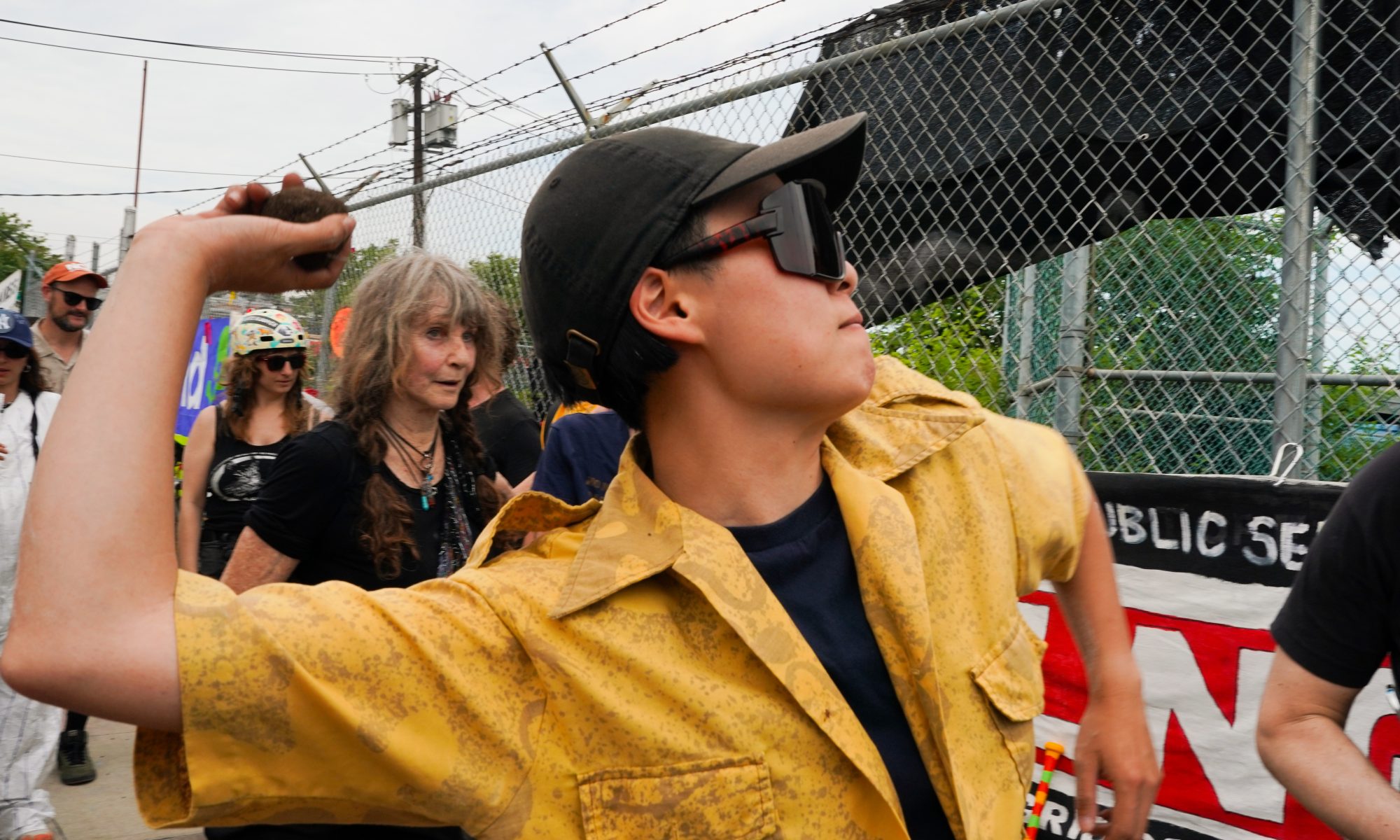By Jean Brannum | jbrannum@queensledger.com
Editors Note: A previous article incorrectly stated that NYC residents would receive a 20% increase in their rates. Current proposals say that New York City residents would have an increase of about $28. This article was also updated to add additional context and background from National Grid.
Residents of Greenpoint gathered outside a now-defunct Little League field to call for the shutdown of the company that gifted it to the community.
Sane Energy Project, a green energy and anti-fracking advocacy group, hosted a rally and bike ride protesting Nationals Grid’s rate hike proposal and called for the cleanup of contaminated land to make way for green energy and green space in North Brooklyn. The organization previously fought against the final part of the North Brooklyn Pipeline and the building of more LNG vaporizers in March.

National Grid is a gas and electricity company that services upstate New York and several places in the city. The company does not provide electricity for New York City, residents.
In April, the company reached a three-year rate plan agreement promising commitment to introducing green energy alternatives and ensuring safe distribution networks. The agreement also promises $210 million in rate credits for New Yorkers who are struggling financially. The settlement was reached after feedback from the community, environmental advocates, and key stakeholders. The plan is pending approval from the Public Service Commission and it would mean that customers in Brooklyn could pay about $28 more monthly for the first year of the agreement. National Grid said that state and federal mandates, and the cost of delivering fuel efficiently, were a large part of the proposal.
According to National Grid’s website, The Liquefied Natural Gas (LNG) tanks hold fuel for the winter months, when gas usage is greater. The Department of Energy explained on its website that LNG is fuel cooled to -216 degrees Fahrenheit, which keeps the fuel in a liquid state. Gas is transported to National Grid and liquefied in storage, a spokesperson from National Grid said.
Sane Energy Project Director Kim Fraczek said that LNG is volatile and toxic.
Fraczek mentioned that National Grid customers used a measly 3% of the energy stored at the facility from 2019 to 2022. She received this information from a discovery question. She claimed that there was no need for such a facility.
“If we would just make our buildings better and put our unions to work making the buildings weatherized and remediated, We wouldn’t even need to have extra gas on hand that’s toxifying our community,” Fraczek said.

State Assemblymember Emily Gallagher, a longtime supporter of green energy, said that she is working to divest fossil fuels in New York. Gallagher is also fighting National Grid due to its footprint in the Greenpoint area.
“National Grid is not in charge of this state nor should they be,” Gallagher said. “Go and fix the system. Go Green, clean up our land, and put it back in the hands of the people, of the communities that live here”

A Home Run to Finish
The rally took place in front of the Greenpoint Little League field, which was National Grid’s gift to the community before being shut down due to concerns of contamination in the ground.
Parent Katherine Thompson, whose son played at the Little League field when it was open in 1999, said it’s “sickening” to think about how she and her children played and picnicked on toxic ground.
To conclude the rally, the community launched “mudballs” over the barbed wire fence into the overgrown field. Ecologist and Team member of the Sane Energy Project JK Canepa explained that the balls of dirt were packed with microbes necessary to clean the contaminated land.
But before the balls of dirt could fly, Dr. Frankenstein, a satirical character of National Grid, disrupted the rally to challenge everyone to a game of baseball outside the field. The character claimed to have billionaire counter-protesters. His team, the New York “Tankees” lost their fake game.
One of the protesters then exclaimed that they should play a new game under their own rules by pitching their mud balls into the field.
National Grid stated that it voluntarily cleaned up the field in 2001 in partnership with the State Department of Environmental Conservation and the Department of Health. In 2022, National Grid notified Little League that the ballfields would be closed for the “foreseeable future.”
Additionally, National Grid wrote the following in response to the rally:
“The organizers of Sunday’s protest ignore the fact that New Yorkers need reliable, affordable access to energy now, and the Greenpoint Energy Center provides that energy to our 1.9 million downstate customers and is the only on-system reliability resource available to our customers in the event of a supply interruption as we experienced during Winter Storm Elliot. Maintaining our existing energy networks is critical to New York’s energy future. National Grid is committed to achieving the State’s decarbonization goals and to working closely with our partners in Albany, City Hall, and communities across the state to execute a clean energy transition without leaving anyone behind.”
National Grid also mentioned that the safety of its customers is a top priority and that the Greenpoint facility is subject to regular inspections from the Public Service Commission Staff and the New York City Fire Department.

